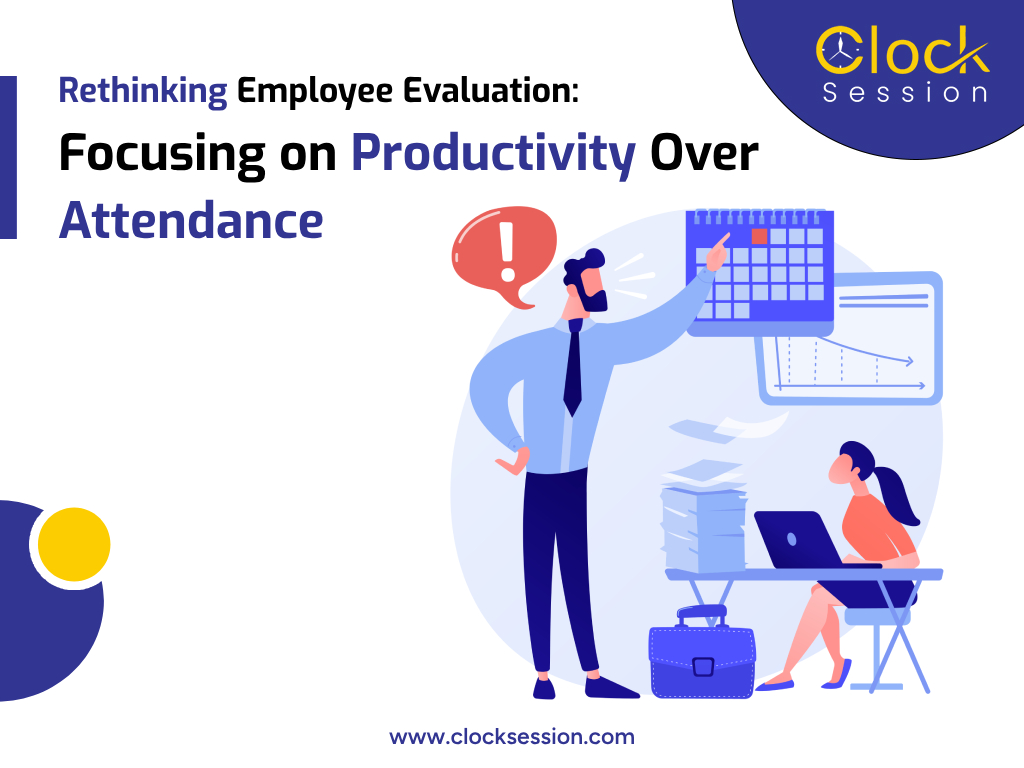Blogs
Rethinking Employee Evaluation: Focusing on Productivity Over Attendance
In the dynamic landscape of the modern workplace, employers need to reassess traditional methods of evaluating employees. One area that warrants a closer look is the tendency to gauge performance based on attendance rather than productivity. In this blog post, we’ll explore the drawbacks of placing too much emphasis on attendance and discuss the benefits of shifting the focus toward productivity as a more accurate measure of employee success.
The Downside of Attendance-Centric Evaluation
The Changing Nature of Work:
The traditional 9-to-5 workday is rapidly becoming a relic of the past as the landscape of work evolves. The rise of remote work and flexible schedules challenges the effectiveness of rigid attendance policies. Employees may no longer be tethered to their desks, yet their contributions remain crucial to the success of the organization.
Impact on Employee Morale:
Overemphasizing attendance can have detrimental effects on employee morale. When individuals feel they are being judged more on their presence than their actual contributions, it can lead to demotivation and a decline in job satisfaction. In an era where work-life balance is increasingly prioritized, strict attendance policies may inadvertently hinder employee engagement.
Overlooking Actual Contributions:
Placing too much importance on attendance runs the risk of undervaluing employees who excel in non-traditional work arrangements. Some of the most innovative and productive employees may not conform to standard 9-to-5 hours. It’s crucial to recognize that true productivity is about results and impact, not just the number of hours spent at a desk.
Productivity as the True Measure
Redefining Success Metrics:
To accurately measure employee success, it’s essential to redefine the metrics used for evaluation. Instead of focusing solely on attendance, organizations should explore alternative metrics that highlight actual productivity and contributions to the company’s objectives. Aligning evaluation criteria with organizational goals is key to fostering a results-oriented culture.
Results-Oriented Approach:
Shifting the evaluation paradigm from time-based to outcome-based is a critical step in recognizing true productivity. Employees should be evaluated based on the results they deliver rather than the hours they clock. This approach not only encourages innovation but also emphasizes efficiency and effectiveness in achieving business goals.
Technology as an Enabler:
In the digital age, technology plays a pivotal role in tracking and measuring productivity. Tools and software designed for remote performance evaluation enable organizations to gain insights into employee contributions, regardless of their physical location. Leveraging technology allows for a more accurate and comprehensive assessment of an employee’s impact on the organization.
Strategies for Implementing Productivity-Centric Evaluation
Clear Communication:
Establishing transparent expectations is fundamental to implementing a productivity-centric evaluation system. Both employers and employees should have a clear understanding of the criteria used to measure success. Open communication channels between management and staff create a supportive environment that encourages productivity.
Setting SMART Goals:
Setting Specific, Measurable, Achievable, Relevant, and Time-bound (SMART) goals is a fundamental strategy for aligning individual objectives with organizational priorities. Tailoring goals to each employee’s role and responsibilities ensures that productivity is directed toward achieving the company’s overarching mission.
Regular Feedback and Recognition:
Consistent feedback is a cornerstone of effective performance evaluation. Regular check-ins between managers and employees provide an opportunity to discuss progress, address challenges, and celebrate achievements. Recognizing and rewarding employees based on their contributions reinforces a positive and results-driven culture.
Case Studies and Success Stories
Highlighting Companies with Progressive Evaluation Practices:
Numerous companies have successfully transitioned to productivity-centric evaluation practices. Take, for example, [Company A], which shifted its focus from strict attendance policies to outcome-based assessments. The result was a more motivated workforce that not only met but exceeded performance expectations. Such success stories provide valuable insights for organizations looking to embrace a productivity-driven approach.
Key Takeaways and Lessons Learned:
Learning from the experiences of companies that have already made the shift is crucial. Key takeaways include the importance of flexibility, the need for clear communication, and the role of technology in enabling productivity measurement. By understanding the lessons learned by others, organizations can navigate the transition more effectively.
Conclusion
In conclusion, the traditional approach of evaluating employees based on attendance is becoming outdated in the rapidly evolving world of work. Shifting the focus towards productivity offers a more accurate representation of an employee’s contributions to the organization. By embracing this approach, companies can foster a culture of innovation, flexibility, and overall employee satisfaction, ultimately leading to improved organizational success. As we move forward into the future of work, prioritizing productivity over attendance is not just a shift in evaluation methods but a strategic move toward building a resilient and thriving workforce.

